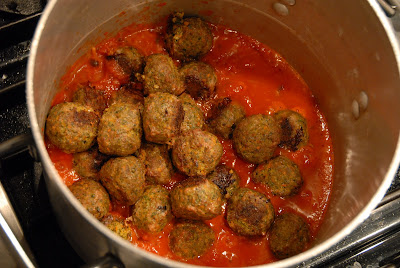pot roast
rump roast
Moist-heat cooking, like that in stew, takes more time, but the results are excellent. The beef becomes tender and the broth develops a rich flavor.
Ingredients:
- 1lb Lasater stew meat (if you have more meat then your stew will be meatier)
- Olive oil, lard, bacon fat
- 1 Medium onion, chopped large
- 2-3 Carrots, sliced thick
- 1-2 Ribs celery, sliced thick
- 1-2 Yams/potatoes (depending on size), bit size pieces
- 2-3 C of Lasater beef broth
- ½ - ¾ C white or red wine or beer
- 2-3 Medium tomatoes, chopped large
- 1 T fresh sage finely chopped
- ½ Bunch parsley (flat leaf preferred)
- 2 Bay leaves
 |
| browned stew meat |
 | |
| deglaze pan |
Directions:
Season beef generously
Heat the oil, lard or bacon fat in pot
Brown beef on both sides in pot
Heat the oil, lard or bacon fat in pot
Brown beef on both sides in pot
Add wine or beer to deglaze pot
Add onions, carrots, & celery saute for approximately 6-8 minutes
Add wine or beer to deglaze pot
Add broth, tomatoes, salt, pepper, bay leaves, and sage
Bring to a simmer then reduce heat to low and cook for 2-3 hours to braise the meat (you can also braise the meat in a 350 degree oven if you prefer that to the stovetop.)
Add yams, potatoes, carrots 1 hour into braising, cook until tender.
Add arrowroot, cornstarch, flour or other thickening agent about 20-30 minutes before braising is complete.
Add onions, carrots, & celery saute for approximately 6-8 minutes
Add wine or beer to deglaze pot
Add broth, tomatoes, salt, pepper, bay leaves, and sage
Bring to a simmer then reduce heat to low and cook for 2-3 hours to braise the meat (you can also braise the meat in a 350 degree oven if you prefer that to the stovetop.)
Add yams, potatoes, carrots 1 hour into braising, cook until tender.
Add arrowroot, cornstarch, flour or other thickening agent about 20-30 minutes before braising is complete.






















